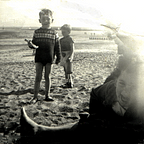From Me to You
“The first time I thought we’d really made it, was when I was lying in bed one morning, and I heard a milkman whistling ‘From Me to You’ Paul McCartney
Following the dramatic chart success of Please, Please Me, The Beatles started 1963 as the British pop music’s most exciting new act. They needed a knock-out follow up single to cement this success.
George Martin was not confident that any of the other Lennon and McCartney original songs were up to the challenge. He asked them to write ‘another song as good as ‘Please Please Me’
This daunting challenge came while The Beatles were middle of an impossibly hectic national tour with fourteen-year-old Helen Shapiro.
There was only one feasible option: the one that every teacher warns against. The songwriters would do their homework on a bus travelling to Shrewsbury in Shropshire.
Composition
The usual trick with rushed follow-up singles was to serve the suckers more of what they liked. Tweak the tune, rearrange the words, double down on the hook. Lennon and McCartney instinctively went in the other direction on all but the last element: the impossibly catchy chorus
The title was inspired by letters page (“From You to Us”) of The New Musical Express, which they were reading on the bus. As Paul later noted, Lennon and McCartney consciously liked to use I/you/me/us/we in their early songs as a ‘very direct and personal’ means of communicating with fans.
If there’s anything that you want/If there’s anything I can do
Again there is a hint of sexual suggestion, perhaps more overt that implied in Please Please Me:
I’ve got lips that long to kiss you/And keep you satisfied (oh)
Like She Loves You and I Want to Hold Your Hand, From Me to You was “very much co-written”.[3] with the two writers mostly in close physical proximity. They would typically start songwriting sessions with blues riffs — and this was the idiom they worked in for From Me to You.
In fact their initial conclusion on completing a rough draft of the song was that it was ‘too bluesy’ for commercial release. It was George Martin who identified its underlying pop sensibility. He could hear the influence of The Four Seasons Big Girls Don’t Cry, then climbing the charts.
Another influence was the early Motown sound, particularly The Marvelettes Please Mr Postman (1961). The Beatles would cover the song for their second album later in the year but capture its light playful sound better here.
These borrowing — subconscious in many cases but sometimes not — were a starting point for musical exploration. The ‘falsetto yelps’ for example, were employed to create dynamic contrast rather than the four-as-one harmonisation of the barber shop tradition: with Paul pleading ‘oh’ a third below John’s s abrasive demands.
The result was a sexual tension, even more apparent on stage.
This frank physicality of The Beatles’ music — epitomised by Lennon’s mocking leer, lazy strum, and open-legged stance at the microphone. Macdonald
One key feature and mood setter was the harmonica part, played by Lennon in a Jimmy Reed-inspired blues style he had learned from Delbert McClinton. Lennon was initially reluctant to play harmonica on a third successive single, fearing it was becoming faddish.
Martin saw its power in establishing an ‘ident’, something Lennon later conceded: “when we’d finished it and George Martin had scored it with harmonica, it was alright.”. Another transformative Martin suggestion was to sing the opening riff, da da da da da dum dum da.
First released in UK on 11th April 1963, From Me to You became their first undisputed British number one single spending seven weeks at the top and twenty in the top fifty. Initially, this success was not repeated in the US where it was released on 27th May by the small jazz and blues label Vee-Jay Records. It failed to chart and sold less than 4,000 copies.
Later in the year, a cover version was released by Del Shannon. This became the first Lennon–McCartney song to enter the US pop charts. The record was then re-released as the B side to Please Please Me in January 1964 — when it reached number 41 on the chart.
At the time neither writer was entirely happy with the arrangement or recording of their third single. But McCartney later conceded that From Me to You, ‘was a pivotal song. Our songwriting lifted a little with that song.’
The Revolution in the Head — Ian Macdonald
